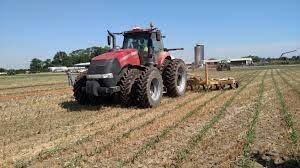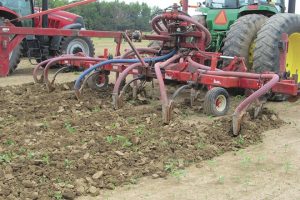Agronomy, Conservation, Homepage Slider, Water Quality
Putting a Value on Manure part 2
By James Hoorman, Hoorman Soil Health Services
Farmers are looking for ways to lower their fertilizer bill as fertilizer prices soar. While applying manure is more complicated than commercial fertilizer, manure is a valuable source of plant nutrients and improves soil health. Putting a value on manure is not easy because it depends on many factors including how it is stored, applied, handled, etc. A review of 159 manure research articles found manure fields had an average yield increase of 4.4%. Adding roughly 5% yield increase to a 200 bushel/acre corn crop (10 bushels) adds value. Most of the yield boost did not compare with the value of the P and K in manure according to Dr. Rick Koelsch from Nebraska. 
Manure should always be tested because nutrients values vary. Take a manure sample close to the date of application to get accurate results. Soil testing is also recommended to avoid over application. Pre-side dress nitrogen tests (PSNT) are commonly taken but take these tests close to manure application date. Weather, moisture, soil temperature, and overall soil microbial activity changes PSNT values tremendously.
To protect water quality, apply manure based on the phosphorus (P) plant needs to avoid over application of N. Target fields first with the lowest soil P , then the lowest K, then the lowest N based on soil test. Applying manure nutrients to fields that have high soil test values reduces the value of manure since those extra nutrients do not increase crop yields immediately. Applying manure at the lower P-rate means you may have to supplement your fields with additional commercial N fertilizer but it’s safer for the environment and utilizes your manure more efficiently. .
The nitrogen (N) value of manure is usually the most difficult to determine due to expected storage and application losses. Solid or semi-solid N manure losses can be 20-40% in manure pack, 25-50% in deep pit poultry manure, and 25-50% in litter, 40-55% in open lots and 40-55% in open lots. In liquid systems, pits under floors can have N losses of 15-30%, 10-30% in above ground tanks, 20-40% in holding ponds, and 70-85% in lagoons. In manure, only about 50% of the N may be available the first year, while generally 80-90% of phosphorus (P) and potassium (K) are available immediately. Source: Ohio Livestock Management Guide, Bulletin 604.
Valuing manure is based on the commercial value of N-P-K and any micronutrients. For simple analysis, current commercial fertilizer for actual N is around $0.67 to $0.85 (assume $0.70), actual P is $0.70 and actual K is $.60. For poultry manure with 52# N, 72# P and 38# K per ton of solid manure, the maximum value for these three nutrients is $110.60 per ton. However, N losses can be quite high so usually the manure value of N is reduced by 50-75% or even ignored plus there are higher costs for applying manure. The manure value is definitely challenging and is usually negotiable.
For dairy manure, pen pack values might be 6.9# N, 5.1# P, and 5.2# K depending on the amount of bedding resulting in a maximum value of $11.52 per ton. Liquid dairy manure from a holding pond might have an analysis of 18.9# N, 13.9# P, and 14.4# K per 1000 gallons with a maximum value of $41.60. Adjustments for N losses in storage, handling, and application losses and application costs may reduce the manure value.
Similar analysis can be done for hog manure with pen pack values around 6.6# N, 5.9# P, and 4.8# K depending with a maximum value of $11.63 per ton. Liquid hog manure from a holding pond might have an analysis of 18# N, 16# P, and 13# K per 1000 gallons with a maximum value of $31.60 without making any other adjustments (storage, handing, application) for manure value. Manure values were obtained from OSU Bulletin 604.
For corn production, corn removes about .37# P and .27# K per bushel. Based on a P-rate, a 200-bushel corn crop removes 74# P and 54# K. To replace the P with pen pack dairy manure (P=5.1#, K-5.2#) requires 14.5 ton but also supplies 75# K. Assuming 50% plant use of N in the manure, the dairy manure supplies about 50# N. On liquid dairy manure, 5,300 gallons of dairy manure supply the P needs but also add 76# K and about 47.7# N, based on 50% N loss. Manure is a valuable resource as a fertilizer but as you can see, putting a value on it can be difficult depending on many factors and assumptions.